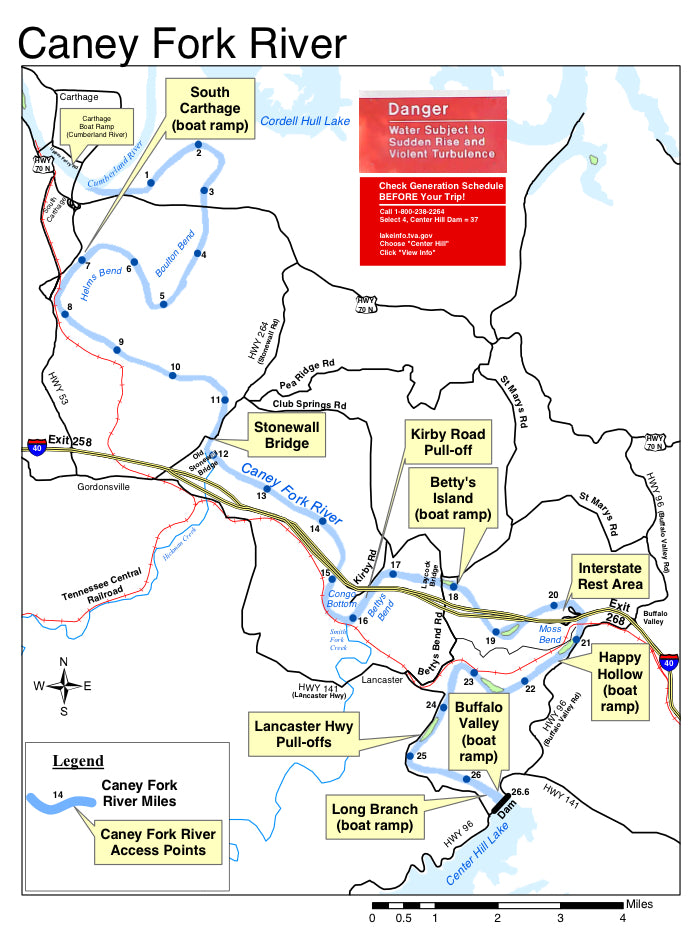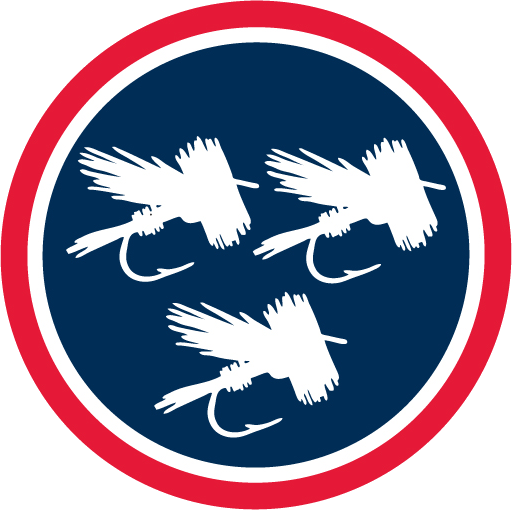
Fishing the Caney Fork
The Caney Fork River - Written by Susan Thraser, Southern Brookies
Overview
The Caney Fork River begins near Crossville, Tennessee and is impounded twice over its approximate 140 miles before reaching the Cumberland River. Most notably for trout anglers is the final stretch of river below Center Hill Dam. The dam is located approximately 70 miles east of Nashville, Tennessee. The 16 miles immediately below the dam is the primary stretch of water supporting trout. This section of the river is stocked annually by the (TWRA) Tennessee Wildlife Resource Agency at four main locations: just below the dam, Happy Hollow, Betty’s Island and Gordonsville access areas.
TWRA stocks, on average, 220,000 rainbow, brown and brook trout March through November. This winter, November through January, a number of brook trout were stocked in the upper section of the Caney, enticing a number of anglers. Due to heavy generation and continually changing water levels, the river does not support any measurable, natural reproduction. However, hold over trout and the occasional stocking of large brood trout, offer opportunities to hook into fish measuring well over 20 inches. Brook trout rarely exceed 14 inches, but the new state record was caught on the Caney Fork in 2016, measuring just over 20 inches.
Generation Schedule
The daily generation schedule at Center Hill Dam is based primarily on power needs and flood control. The frequent releases provide enough cool water to support trout fishing year round. It is important to check the schedule before venturing out. Water levels can rise suddenly and become dangerous. The schedule can be found either by calling TVA #800-238-2264, #4, #37, or through the TVA website.
https://www.tva.gov/Environment/Lake-Levels/Center-Hill
Fishing Access
The river is suitable for wading during periods of non-generation; however, the current is too strong for wading under generation. Fishing from kayaks, canoes and drift boats is also very popular during periods of non-generation. Extreme caution should be used when drift fishing during periods of generation and is recommended for experienced boaters only.
Use the link below for public access points and boat ramp locations:
Creel Limits
For detailed information on trout stream fishing regulations, see the trout section of the Tennessee Fishing Guide: https://issuu.com/thebinghamgroup/docs/twrafishing2018_interactive
The regulations for the Caney Fork River are:
- One Brown Over 24” may be harvested (under 24” protected; must be released)
- Rainbows and Brookies under 14” may be harvested (14”- 20” protected; must be released)
- One Rainbow and One Brookie over 20” may be harvested
- Total Creel Combined - 5 Trout
Equipment Suggestions
Rod: The most common outfit for fly fishing the Caney Fork River is a 5 or 6 weight rod in lengths ranging from 8.5 to 9 feet.
Fly Line: Weight forward floating lines are recommended during times of non- generation. Sinking lines are necessary during generation to ensure the flies are able to reach the fish due to the swift current.
Leaders: Fluorocarbon leaders and tippet with overall lengths between 9 and 12 feet and sizes tapering from 3X to 6X (depending on fly size) are recommended.
Flies: The majority of flyfishing is subsurface with midges heavily favored. Dry fly activity is limited; however, the occasional midge, mayfly and caddis hatches are seen a number of times during the year. Terrestrials, such as spiders, grass hoppers and beetles, are used during the summer months. Streamers produce fish year round.
Patterns to take along:
- Eat at Chucks soft hackle
- Zebra midges in various colors
- Bead head pheasant tail
- Scuds and sow bugs
- Woolly Buggers in various colors
- Guacamole stick bugs
- Griffith’s gnat
- Adams
- Elk Hair Caddis
